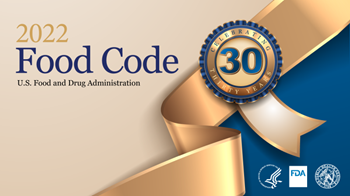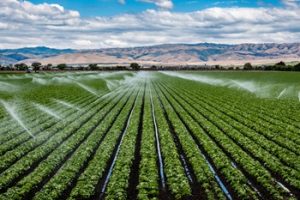<p>By Ashley Eisenbeiser, MS, CFS, Senior Director, Food and Product Safety Programs, FMI </p><p><img src="https://www.fmi.org/images/default-source/blog-images/2022-fda-food-code.tmb-large-350-.png?sfvrsn=794eef98_1" style="float:right;margin-bottom:10px;margin-left:10px;" class="-align-right" alt="2022 FDA Food Code" sf-size="212043" />When it comes to food safety, operators and regulators of retail food establishments share a common goal to produce safe, quality food for consumers. The U.S. Food and Drug Administration’s (FDA) <i>Food Code </i>is a reflection of the alignment of stakeholders on food safety. The <i>Food Code </i>represents FDA’s best advice for a uniform system of provisions that address the safety and protection of food offered at retail and in foodservice. The first version of the <i>Food Code</i> was published in 1993, and 2022 marks the 10th edition and the 30th year of the <i>Food Code</i>. Published on December 28, 2022, the <a href="https://www.fda.gov/food/fda-food-code/food-code-2022" target="_blank">2022 edition</a> reflects the input provided by regulatory officials, industry, academia and consumers that participated in the last biennial meeting of the <a href="http://www.foodprotect.org/" target="_blank">Conference for Food Protection (CFP).</a> </p><p>Although a new <i>Food Code</i> has been released, many jurisdictions will continue to use older versions. The timeframe for jurisdictions to adopt a newer version of the <i>Food Code </i>can be long<i>, </i>in some cases taking years. Most of the U.S. population lives in a state where at least one state agency has adopted some version of the FDA <i>Food Code,</i> with California remaining the only state that has not adopted any version of the<i> Food Code. </i>The <a href="https://www.fda.gov/food/fda-food-code/adoption-fda-food-code-state-and-territorial-agencies-responsible-oversight-restaurants-and-retail" target="_blank">versions that have been adopted by state and territorial agencies responsible for the oversight of restaurants and retail stores</a> vary greatly, ranging from the 2017 <i>Food Code</i> to the 1995 <i>Food Code</i>. In 1997, the South Dakota Department of Health, Office of Health Protection adopted the 1995 <i>Food Code; </i>since then, there have been eight editions of the <i>Food Code</i>. Food safety is without borders and crosses jurisdictional boundaries, highlighting the important role science-based food safety policies can have in protecting public health.<font color="inherit" face="inherit" size="-1"> </font></p><p>The variability and patchwork of <i>Food Code</i> adoption across the U.S. creates a significant challenge for retailers to have to know and comply with the requirements of each jurisdiction in which they operate. FMI supports uniform adoption of the FDA <i>Food Code</i>. Successful federal, state, local and tribal partnerships for food safety allow strong scientific standards to be used in all regulatory jurisdictions. </p><p>The <a href="https://www.fda.gov/media/96942/download" target="_blank">benefits associated with the complete adoption and implementation of the FDA <i>Food Code</i></a> have long been recognized by both regulatory agencies and industry, including:</p><ul><li>Reduction of the risk of foodborne illnesses within food establishments, thus protecting consumers and industry from potentially devastating health consequences and financial losses.</li><li>Uniform standards for retail food safety that reduce complexity and better ensure compliance.</li><li>The elimination of redundant processes for establishing food safety criteria.</li><li>The establishment of a more standardized approach to inspections and audits of food establishments. </li></ul><p>Through the adoption and implementation of consistent standards, we can ensure a best-in-class food safety system that strengthens the safety of our food supply regardless of jurisdiction. </p><p><b>Additional Resources:</b> </p><ul><li><a href="https://www.fda.gov/food/fda-food-code/food-code-2022" target="_blank">2022 FDA<i> Food Code</i></a> </li><li><a href="https://www.fda.gov/food/fda-food-code/summary-changes-2022-fda-food-code" target="_blank">Summary of changes made to the 2022 FDA <i>Food Code</i></a></li><li><a href="https://www.fda.gov/food/guidance-regulation-food-and-dietary-supplements/retail-food-protection" target="_blank">FDA Retail Food Protection webpage</a> </li></ul>
[#item_full_content]




